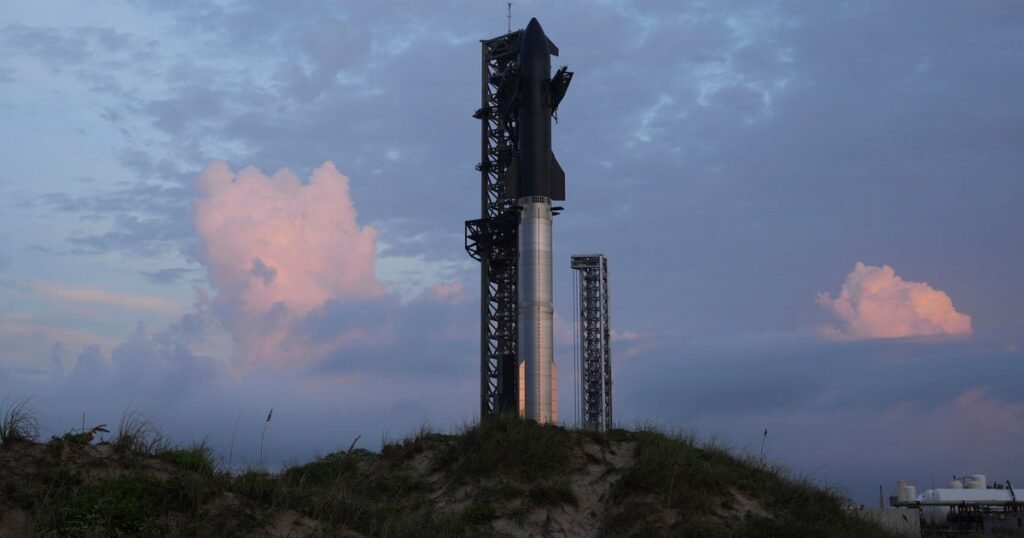
SpaceX on Tuesday night launched the 10th test flight of its giant Super Heavy-Starship rocket, a milestone mission to demonstrate fixes and upgrades in the wake of three catastrophic failures earlier this year.
The Super Heavy booster’s 33 methane-fueled Raptor engines roared to life at 7:31 p.m. ET, sending out a thundering exhaust plume as the 40-story-tall rocket climbed away from SpaceX’s Starbase facility on the Texas Gulf Coast.
The previous two attempts to launch the program’s latest test flight had been scrubbed, first on Sunday due to an oxygen leak in a ground system and again on Monday because of an electrically charged anvil cloud near the launch pad that did not move out of the area in time.
Eric Gay / AP
Arcing to the east toward the Straits of Florida, the most powerful rocket ever built put on its usual spectacular performance Tuesday as it rapidly accelerated toward space atop some 16 million pounds of thrust, more than twice the power of NASA’s Space Launch System moon rocket.
Given the rocket’s uneven track record to date, concern has been growing in some quarters that a moon lander variant of the Starship being built for NASA may not be perfected in time for a planned 2027 landing, possibly not before the Chinese plant their own flag on the moon at the end of the decade.
Be that as it may, the company’s near-term focus was getting the Super Heavy-Starship flying again after multiple back-to-back failures earlier this year.
The goals of the latest flight were to test the Super Heavy first stage under a variety of stressful flight conditions, deliberately shutting engines down during descent to splashdown in the Gulf to make sure it can handle real failures during an actual mission.
This is a developing story and will be updated.




